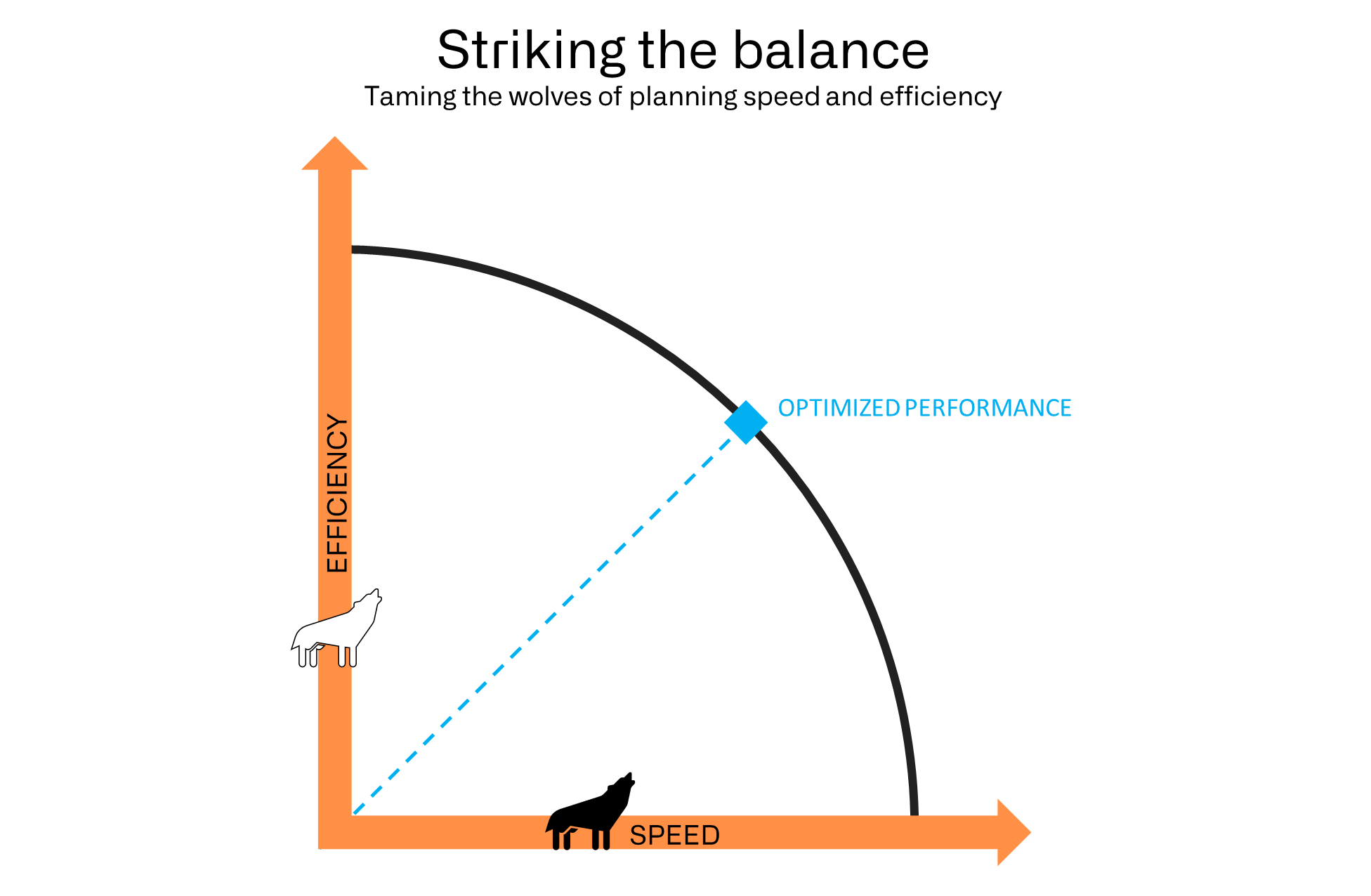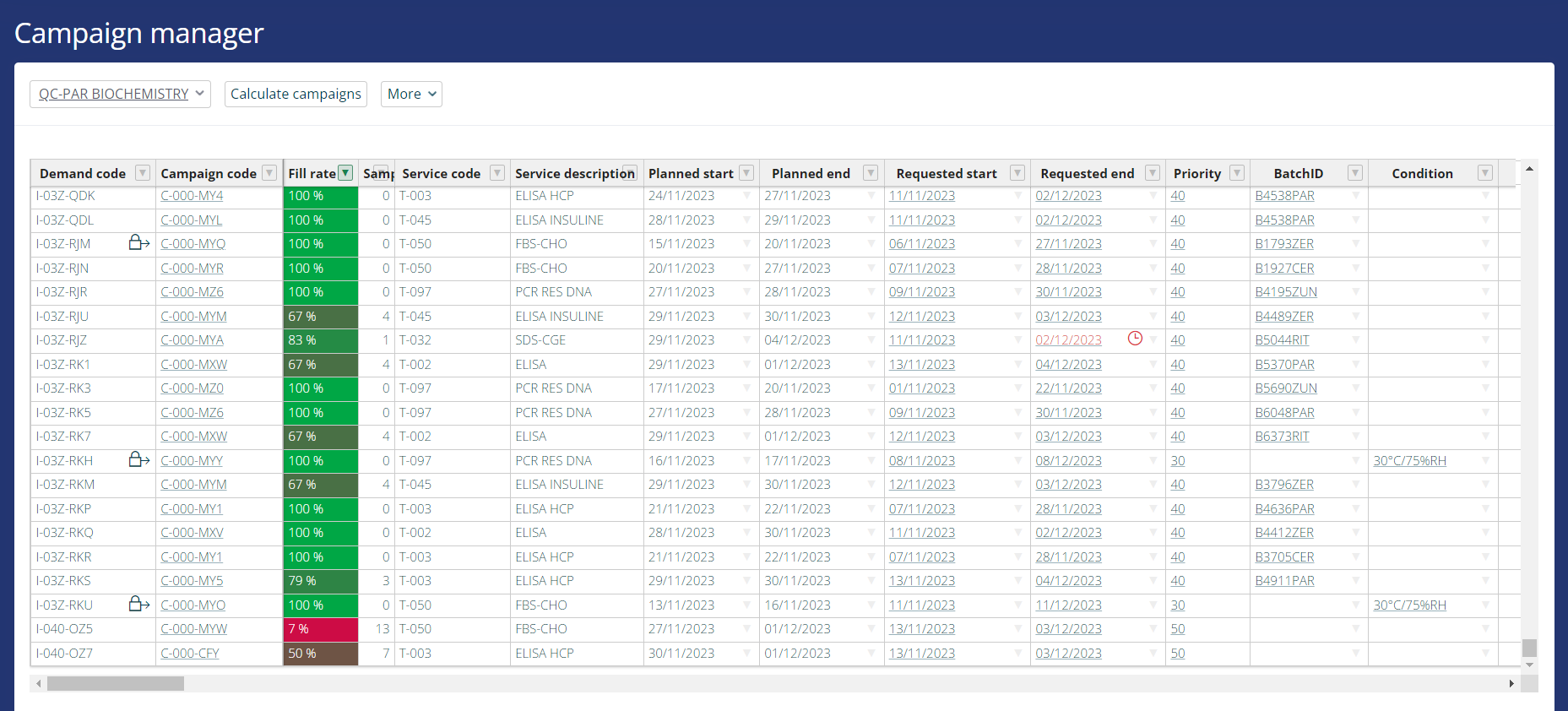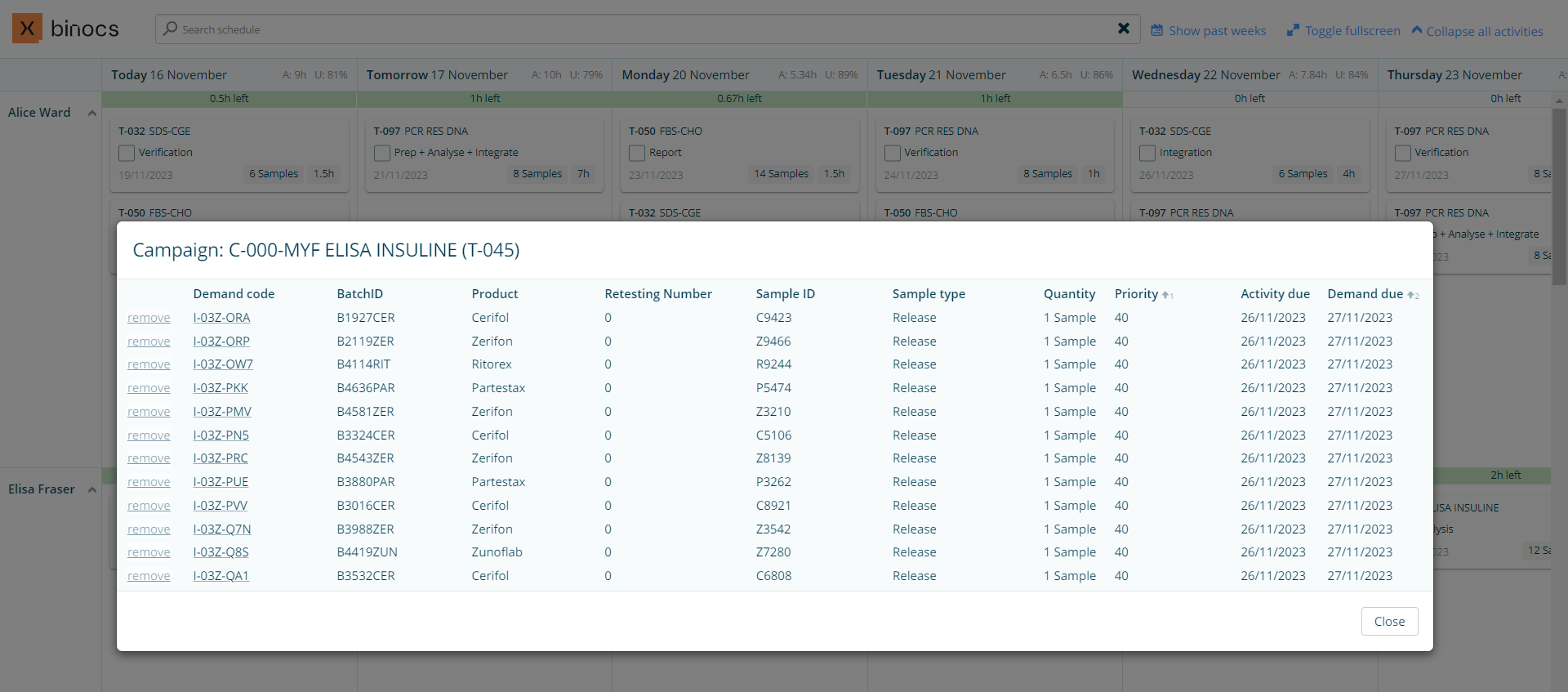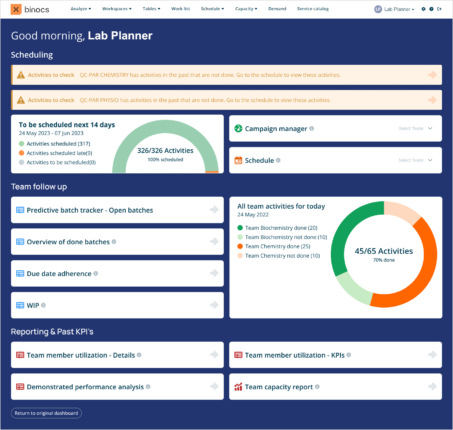
Inside your QC lab there are two wolves: speed and efficiency
Quality control (QC) labs are besieged by two opposing forces: speed (meeting service level requirements) and efficiency (analyzing with as few resources as possible). Ultimately, though, this battle of planning speed vs efficiency is one where, no matter which wins, everybody loses. In this latest blog, Adam Lester-George explores the two wolves inside every QC lab—and how you can tame them.
You might want to check out our video presentation
Balancing speed and efficiency in QC planning
Harnessing the hidden power of concurrent and sequential sample testing
Click here to watch for free!
Quality Control: a delicate ecosystem
Your QC laboratory receives work requests for hundreds of sample tests each week. This requires potentially dozens of different analytical methods to be processed by a team of 5, 10, 20 or many more technicians. Each technician is trained on a range of different test methods and qualified to operate different equipment types. Already this is a logistically complicated scenario for a lab planner to organize! The complexity is further compounded, however, by the fact that certain analytical instruments support concurrent testing or auto-sampling.
Auto-sampling and concurrent testing: instruments designed for efficiency
Let’s take HPLC (high-performance liquid chromatography) devices as an example. An HPLC auto-sampler may have a capacity allowing 96 samples to be loaded and queued before initiating the analysis run. Assuming that a technician has 96 samples to hand, ready to be tested following the same method, they can prepare the instrument, load the samples, and initiate the analysis to run for the next 16 hours, uninterupted. Clearly, this is the most efficient solution, since it means the device only needs to be prepped once and the technician only has to dedicate one hands-on session to test 96 samples. This ideal scenario, however, doesn’t take into account all of the complexities of a real world lab.
The realities of managing speed vs efficiency
In reality, the work requests coming into the QC lab will be submitted from different clients, with different priority levels, varying due dates, and subject to a range of service level agreements. If you have 24 samples that require HPLC testing with an urgent delivery date, the lab planner must decide:
- which technician is qualfied and available to run the test
- which instrument to assign to the task
- whether there are additional samples that can be grouped together with the urgent requests
- If not, should they proceed with testing now—but run the analysis at 25% capacity; or
- Wait until more samples arrive next week—but risk delivering some samples late or creating bottlenecks?
Clearly this is a delicate balancing act and one which lab planners and managers must contend with on a daily basis. So what guidance can they follow to make the right decisions in an environment where a thousand other challenges are vying for their attention?
The parable of the two wolves
There’s an old parable (apocryphally attributed to indigenous American lore) in which an old man teaches his grandson about the opposing forces of good and evil that exist within all humans. He compares the negative and positive urges to two wolves buried deep inside every person, locked in constant battle. When the grandson asks which wolf will win, the old man famously replies “the one you feed”.
There’s an important lesson there about investing ones energies in the right places but what does it mean for lab planning? The two wolves inside your QC laboratory are less black and white than in the parable because it’s not a simple story of ‘good vs evil’, where one outcome is objectively better. Instead, it’s a story of ‘speed vs efficiency’, where both outcomes are equally desirable but where tight operational margins make them mutually exclusive.
How so? Well, if you feed the ‘planning speed wolf’ by processing analyses as quickly as possible—for instance, by testing 4 urgent samples immediately, even if the instrumentation is only at 20% capacity—then you sacrifice the benefits of waiting to maximize capacity. You’ve just starved the ‘planning efficiency wolf’.
On the other hand, feed the efficiency wolf—by delaying the analysis to achieve 100% instrumentation capacity—and you have allowed the speed wolf to be defeated, obliterating your service level.
So what do you do when neither wolf’s victory is the optimal outcome for everyone else? In other words, how do you tame your wolves and get them to work together for the greater good? The simple answer is: feed them both!

Feeding your wolves, byte by byte
As described above, a significant part of every QC lab planner’s responsibility is to make the critical decisions that will keep the speed and efficiency wolves sated and working in harmony. This means feeding both of your laboratory wolves, finding that balance between immediate low capacity testing and delayed sample grouping. And the key to feeding your wolves? Byte by byte, with high quality data.

Good data is key to good decision-making—but to use it effectively, you need the data in one place and you also need to know what to do with it. When it comes to sample grouping (or ‘campaigning’), LIMS (laboratory information management systems) offer some rudimentary functionality. At best, this allows lab staff to define incoming samples by discrete group, based on key characteristics (such sample, test, or product type). However, once the samples are received in the lab, they are typically not logged in LIMS again until testing is complete, making it less suitable for reacting to unexpected changes and exceptions.
Sample management is also only one aspect of the operational organization that is required to facilitate effective decision-making. As described above, lab planners also need to be able to know which analysts and instruments are suitable and available to process the incoming test requests and to then combine this with all of the information about sample due dates and campaigning. In other words, labs need a single source of all the right data, with apporpriate mechanisms in place to help tame the wolves of speed vs efficiency.
Binocs Campaign Manager: wolf-tamer
Binocs is often summarized as the market-leading solution for laboratory resource management, the most effective way to plan and schedule lab staff and equipment. While this is undeniably true, it’s also an oversimplification because Binocs represents a lot more: it’s that single source of data.
Not only does it track all information on team member competence and availability, and on equipment disponibility, it also monitors and processes all incoming work requests, including demand priorities, delivery dates, method details, lead times, etc. Furthermore, Binocs knows the capacity of different high-value instruments in the lab and how these relate to the potential campaignability of different test methods.
In practical terms, this means that Binocs can intelligently and automatically receive sample requests directly from LIMS, group these into campaigns where appropriate, and assign the testing activities to the most suitable technician and instrument. This tames both the speed wolf and the efficiency wolf and enhances lab operation in two main ways.
1. Lab planner overview
The main Campaign Manager view allows planners and managers to view, at a glance, which samples (for instance, by Batch ID) are included in which campaigns, and which method (denoted by service) will be used to analyze them. Critically, it also allows them to immediately identify the fill rate of the campaign—in other words, to see whether the grouped samples will fill the instrumentation capacity. If not, the delivery date (Requested end) and Priority data allow them to make an informed decision about whether to proceed at a lower fill rate or wait until more samples are available to be campaigned. Indeed, with Binocs workflows, even this process can be automated, to ensure that speed vs efficiency balance is always optimized.

2. Lab technician testing summary
For analysts and technicians working on the lab floor, the Binocs Schedule board includes a clear list of all sample / batch IDs to be included in a given test. This allows them to see an unambiguous breakdown of exactly what they are expected to analyze, with complete confidence that the campaign fill rate has been signed-off and (if testing proceeds as planned) that the samples will be executed within agreed service level.

Tired of howling at the moon? Ready to join the pack and find out why 40% of Big Pharma uses Binocs to achieve tangible benefits for their QC labs? Why not book a free demo session with our team or join us for our next webinar, which is all about the quantifiable advantages of effective sample campaigning:



